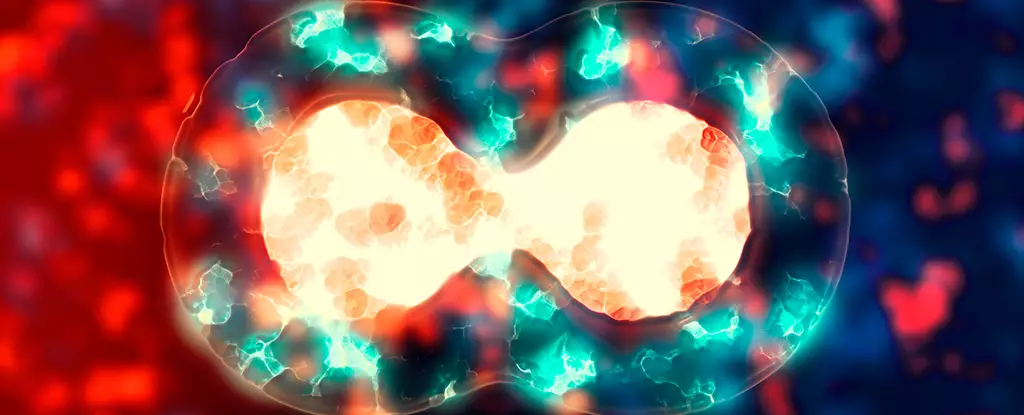Within the intricate tapestry of human development, early gestation stands as one of the most poorly understood stages. Despite the many milestones we achieve through our lives, the period that precedes our first breath remains shrouded in mystery. A recent breakthrough led by Eduardo Maury, a clinician-scientist from Harvard Medical School, is shedding light on this enigma, uncovering the potential effects of genetic deletions during this formative phase and their implications for schizophrenia.
Schizophrenia, a complex mental health disorder, affects an estimated 1 in 300 individuals worldwide, typically surfacing in young adulthood. The standard narrative surrounding this condition revolves around genetics and environmental factors; childhood trauma and viral infections are frequently cited as contributors. However, Maury’s findings pave the way for a paradigm shift; they suggest that certain genetic predispositions linked to schizophrenia may be acquired during early gestation, rather than strictly inherited.
Decoding Genetic Deletions
The crux of Maury’s research focuses on two specific genetic deletions—NRXN1 and ABCB11—identified through an extensive analysis of blood samples from nearly 25,000 individuals, both affected and unaffected by schizophrenia. This landmark study not only emphasizes the significance of genetic factors in the early stages of development but also posits that the roots of schizophrenia may extend beyond parental inheritance.
Typically, genetic risks associated with schizophrenia can be traced back to germline mutations inherited from parents, responsible for approximately 80% of all cases. The remaining cases, which do not present clear genetic links, highlight the complexity of this disorder. By revealing that the NRXN1 and ABCB11 genes can exhibit deletions in utero, Maury and his team are steering the conversation toward a broader understanding of the disorder’s etiology.
The Biological Role of Identified Genes
NRXN1, a well-studied gene that helps facilitate neuronal signaling, has previously been linked to schizophrenia when its mutations are inherited. However, Maury’s research indicates that the somatic deletions observed—those not passed down from parents—could be significant. Particularly striking is the finding that deletions in NRXN1 were present in a notable number of schizophrenia cases yet largely absent in control subjects.
On the other hand, ABCB11 encodes a protein found in the liver, and while its connection to schizophrenia is less established, Maury’s study highlights its potential involvement in treatment-resistant cases. With deletions noted in individuals who did not respond to antipsychotic therapies, ABCB11’s role adds another layer of complexity in understanding how various genes can uniquely influence the manifestation and treatment of schizophrenia.
Implications for Early Intervention
The implications of these findings are profound—not only do they suggest that genetic factors can be acquired during gestation, but they also open the door for early intervention strategies. By identifying the genetic signals that may predispose individuals to schizophrenia, research can pivot toward preventive measures. It emphasizes the urgent need for developing tools that could potentially alter the course of an individual’s mental health trajectory long before symptoms emerge.
This research not only strengthens the case for genetic screening during pregnancy but also underscores the importance of monitoring gestational environments. The prospect of early detection and intervention could revolutionize how we approach mental health, shifting from a reactive to a proactive stance.
Further Research and the Need for Continuous Exploration
Despite the promise of Maury’s findings, it’s crucial to tread carefully. The identified genetic deletions—while intriguing—still require extensive validation. The scientific community must ensure that these results are reproducible across diverse populations and settings. Continuous exploration into how these genetic factors interact with environmental influences will be pivotal in constructing a comprehensive understanding of schizophrenia’s origins.
Moreover, as research into genomics and epigenetics advances, the lessons learned from Maury’s research will likely encourage new questions about the crucial interplay between genetics, environment, and mental health outcomes. As we delve deeper into the genetic landscape of schizophrenia, the focus may ideally extend to how these findings can be translated into clinical applications, leading to improved preventative strategies and more effective therapeutic interventions.
Eduardo Maury’s comprehensive study illuminates a crucial piece of the schizophrenia puzzle, reinforcing the notion that the trajectory of mental health begins far earlier than traditionally acknowledged. Understanding the genetic alterations occurring in utero could one day herald a new era of preventative mental health care—one anchored in scientific inquiry, rigorous validation, and unwavering hope for those at risk.


Leave a Reply